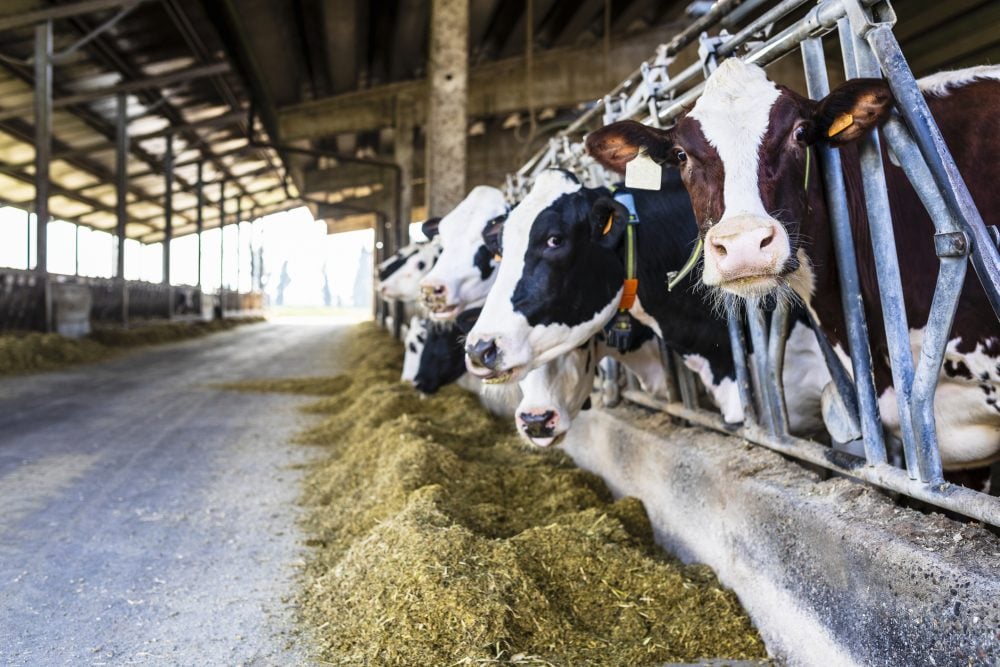US requires bird flu tests for dairy cattle moving between states

Chicago | Reuters—The U.S. government will require dairy cattle moving between states to be tested for bird flu starting on Monday, Agriculture Secretary Tom Vilsack said on Wednesday, as federal officials ramp up their response to an outbreak in herds.
Vilsack said all laboratories and state veterinarians in the country must report positive tests, and the U.S. Department of Agriculture (USDA) would pay for increased testing.
The measures aim to boost USDA’s understanding of the virus and contain the spread of the disease that has infected 33 dairy herds across eight states over the past month.
Read Also

CBOT weekly outlook: May futures winding down, coming rains factor into prices
As the last full of week of April is set to wind down, two factors will determine the course of United States soybean, corn and wheat futures. Those are the rain forecast for the weekend of Apr. 27 and 28, and last day for May futures on Apr. 26, according to hedging strategist Scott Capinegro of AgMarket.net.
The U.S. Food and Drug Administration reported on Tuesday it found bird flu virus particles in some pasteurized milk samples, but said it remains safe for human consumption as such milk has been heated to a high temperature to kill harmful bacteria and viruses.
The U.S. milk supply is safe “based on the information we currently have available,” Vilsack told reporters. Milk containing bird flu particles entered the commercial supply from asymptomatic cows that were infected, he said.
“The reality is we’ve had situations where we’ve tested asymptomatic herds only to find that they have virus,” Vilsack said.
USDA has carried out more than 2,000 tests on cattle samples over the last several weeks, Vilsack said.
“It surely is possible that there could be much more virus infection in cows throughout the United States,” said Dr. Michael Osterholm, an infectious disease expert at the University of Minnesota.
Dairy cows must test negative for influenza A virus at an approved laboratory before being shipped across state lines, the USDA said. Owners of cows that test positive will be required to provide epidemiological information, including animal movement tracing, the department said.
The USDA plans to initially focus testing on lactating cows.
Positive flu tests will prohibit cows from being moved for 30 days and until they test negative, Vilsack said. Dairy cattle appear to recover from bird flu, a disease often lethal to chickens and turkeys.
“Over the last several weeks, USDA has noted spread between cows within the same herd; spread from cows to poultry; spread between dairies associated with cattle movements; and cows without clinical signs that have tested positive,” Vilsack said.
The Meat Institute, which represents U.S. meat processors, urged USDA and the U.S. Centers for Disease Control and Prevention to conduct additional testing to ensure beef remains safe to eat. The group also called on the agencies to issue specific guidance to ensure meatpacking workers are protected from infection.
Officials have said they believed wild birds introduced the H5N1 virus to cattle. One dairy worker in Texas tested positive, though CDC said the current public health risk was low.
The CDC maintained its risk assessment after USDA microbiologists on April 16 “identified a shift in an H5N1 sample from a cow in Kansas that could indicate that the virus has an adaptation to mammals,” the USDA said. The finding had been seen previously in other mammals and does not impact viral transmission, according to the department.
The USDA “has not found changes to the virus that would make it more transmissible to humans and between people,” according to a statement.
Live cattle and feeder cattle futures on the Chicago Mercantile Exchange fell on news of the USDA’s plan to expand testing for dairy cows, even though traders were skeptical that the avian flu issue would impact beef cattle.
“The psychology is saying, ‘This is bad,’” said Rich Nelson, chief strategist for brokerage Allendale Inc.
—Additional reporting for Reuters by Julie Ingwersen and Julie Steenhuysen in Chicago
Source: Farmtario.com

